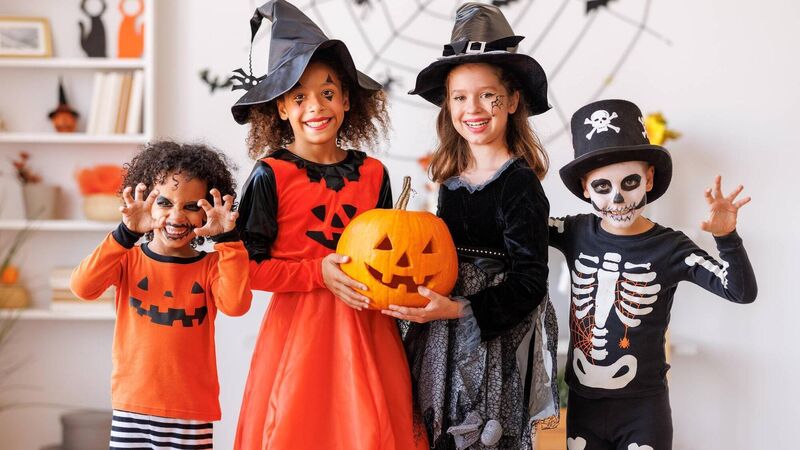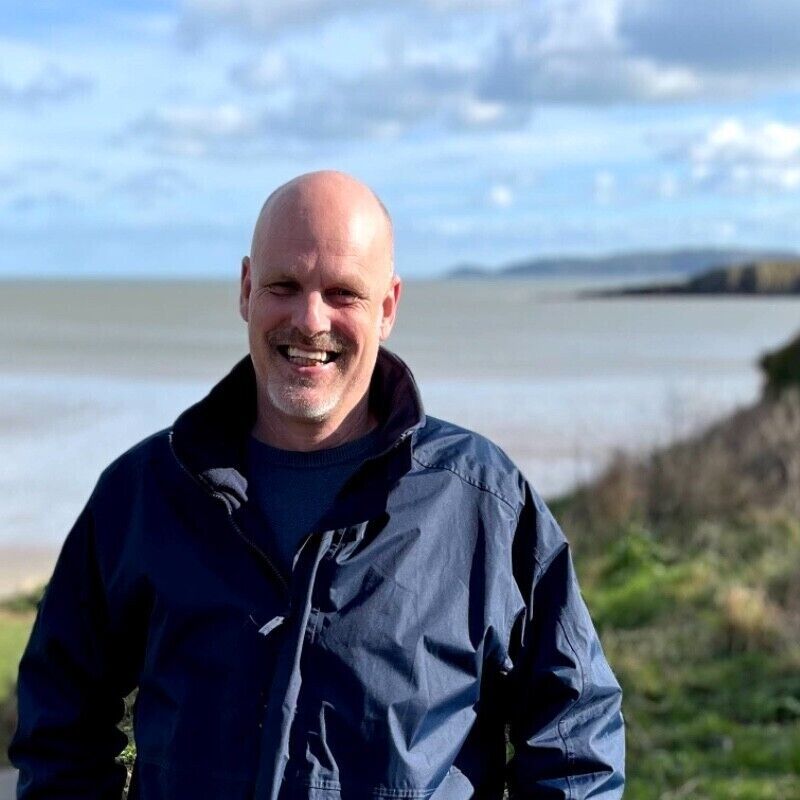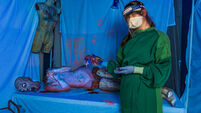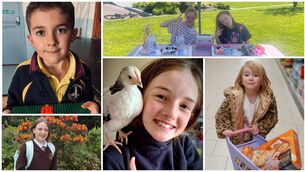How sustainable choices can maximise Halloween fun and mitigate environmental harm

We throw away enough plastic and pumpkins every year to fill Croke Park — damage that persists long beyond autumn
A couple of ghouls on the front porch, two or three pumpkins on the windowsill, and twin witches in the garden are great fun, but Halloween’s leftovers are a horror story for the planet.
Hans Zomer, CEO of Global Action Plan — an environmental organisation that encourages the individual to nurture change — says Halloween is a great feast, but we need to rethink how we celebrate it.
“Ireland’s Halloween hangover is scarier than the ghosts,” says Zomer. “We’re throwing away enough plastic and pumpkins each year to fill Croke Park.”
Some 2,000 tonnes of plastic waste is generated at Halloween, according to Mywaste.ie.
And according to https://greyhound.ie/ an one million Halloween costumes are purchased annually in Ireland.
CLIMATE & SUSTAINABILITY HUB
While there isn’t much Ireland-specific data, if we assume similar levels per capita to Britain, Halloween might generate 1,400 tonnes of waste from pumpkins alone.
“Not only will the vast majority of these pumpkins be discarded, it’s also a waste of resources. Growing that many requires 50 hectares of farmland and results in an estimated 400 tonnes of CO2 equivalent emissions.”
Zomer says the scariest thing about Halloween isn’t the monsters, but the polyester. “Most costumes are made of plastic, worn once, and then thrown out. We estimate 540,000 Halloween outfits are discarded every year into bins and landfills.”

Longford Co Council environmental awareness officer, Carla Timoney McGoey, wants Halloween to be a time to rethink consumerist behaviour and instead to celebrate creativity, connection, and coming together.
“Halloween doesn’t have to come with a pile of waste,” Timoney McGoey says.
“By reusing costumes, choosing natural decorations, and composting pumpkins and food waste, families can enjoy a fun, festive Halloween that’s lighter on the planet and easier on the pocket. It’s about imagination, not over-consumption.”
From costumes to decorations, pumpkins and trick-or-treating, how can parents make sustainable choices that maximise fun but mitigate environmental harm?
- Search out pre-loved costumes at charity shops, or make ‘frighteningly good’ DIY costumes from reused materials, says Timoney McGoey.
“Instead of buying new, encourage kids to get creative by making their own eco-friendly costumes and reusing clothes and materials you already have. Old clothes, cardboard, fabric scraps, and even paper can be transformed in to fun, unique outfits.”
Jennifer Muscheidt, environmental awareness officer with Fingal Co Council, suggests an old sheet for a ghost costume, or a t-shirt cut in to strips and made in to a mummy costume, and cardboard for someone who wants to be a robot. “Look at what you have and see how it can be made in to a costume.”
- British data shows that 40% of costumes are only used once, so why not arrange a costume swap when Halloween is over? “Do this with your school, friends, or neighbours to give used costumes a new life,” says Timoney McGoey.
- Unlike Christmas decorations, which we usually stow in the attic for yearly use, “Halloween decorations are cheap, plastic, often very flimsy and get discarded,” says Muscheidt.
“We put a lot of the Halloween decorations outside, and they get destroyed.”
She recommends incorporating home-found materials (egg cartons, cereal boxes) in to decorations you make with your children. “A toilet roll can be made in to a bat, cardboard can be cut to make a graveyard, or use jam jars with tea-lights in them — [perhaps] paint them with a Halloween face.
“Instead of synthetic cobwebs, use a more natural décor in your window, with leaves, twigs.”
- If using natural materials for decorations, Timoney McGoey advises taking only what you need, and using items already on the ground. “After Halloween, compost them all. Using biodegradable, natural materials will reduce synthetic waste.”
Invest in decorations you can use again and use rechargeable batteries or solar-powered lanterns for energy-efficient lighting, adds Timoney McGoey.
- When considering decorations, Zomer recommends re-envisioning Halloween as more about the process than the product. Instead of “buying stuff” in the supermarket, he suggests sitting around the table with your children and making decorations. “Can we redefine Halloween as an occasion to meet and bond together, and less as a time for consumerism and convenience?”

- Reframe pumpkins as food rather than as decoration.
- Timoney McGoey highlights their nutritional content. “They’re full of vitamins, fibre, water — they’ve got great health benefits. Try to use all the pumpkin by making it in to soups and pies or roasting the seeds.”
- Muscheidt points to ways of making the most of pumpkins at https://stopfoodwaste.ie/seasonal-events/making-the-most-of-pumpkin.
- For pumpkin recipes: https://www.bbc.co.uk/food/pumpkin, and also https://stopfoodwaste.ie/foods/pumpkin.
- Compost or place leftover pumpkins in a food waste bin, or home compost instead of sending them to landfill, says Timoney McGoey. “In landfill, they decompose anaerobically and emit methane, a potent greenhouse gas that contributes to climate change.”
- Ireland is the world’s fourth-largest sugar-loving nation, eating around 96.7g of sugar daily, primarily from processed snacks and drinks, according to World Population Review.
- Keelings recently launched a Halloween punnet, teaming up with dietitian Orla Walsh to create Halloween-themed fruity snacks, including Monster Apple Mouths — apples with nut butter and strawberry ‘tongues’.
- As part of Ireland’s Sustainable Halloween campaign, communities are encouraged to celebrate without bonfires. “Bonfires often involve illegal waste — tyres, furniture, plastics.
- They release toxic pollutants, such as dioxins, which account for over 50% of harmful dioxin emissions in Ireland. They pose serious risks to public safety, damage green spaces, and are often used for unlawful waste disposal,” says Timoney McGoey.
Fingal County Council is holding a Halloween amnesty at their recycling centres for items like mattresses and wood, so these won’t be used in bonfires. See fingal.ie.
- Longford’s Dead of Night Festival, until November 1, has something for all ages — storytelling, live music, haunted houses, workshops, and cultural celebrations, plus Fire and Shadows procession on October 31.
- Cork City Council is sponsoring Cork Community Art Link’s storytelling spooky nights in Shandon. The community arts group uses recycled goods — and reuses props.
- Cork City Council also sponsors Dragon of Shandon.
- Take an evening stroll by the Lough in Cork and watch the bats.
Timoney McGoey says Halloween is a chance to tell stories about nature and to enjoy autumn outdoors with scavenger hunts by using natural materials, or inviting local families to join a post-Halloween litter pick. More ideas: https://www.ireland.ie/en/visit/halloween/.
Zomer says Samhain began as a celebration of nature. “Let’s honour that by making Halloween sustainable again. The spirit of Halloween is about transformation. Transform it in to something greener: A festival celebrating creativity, nature, and community.”









